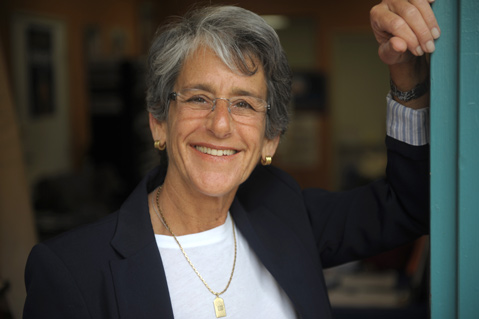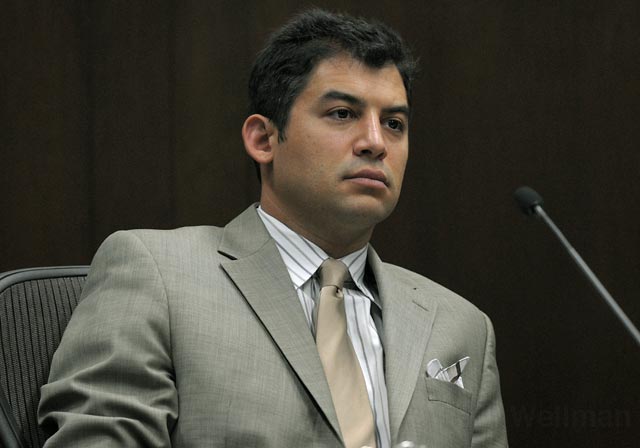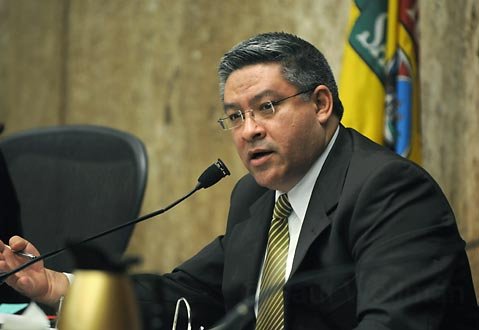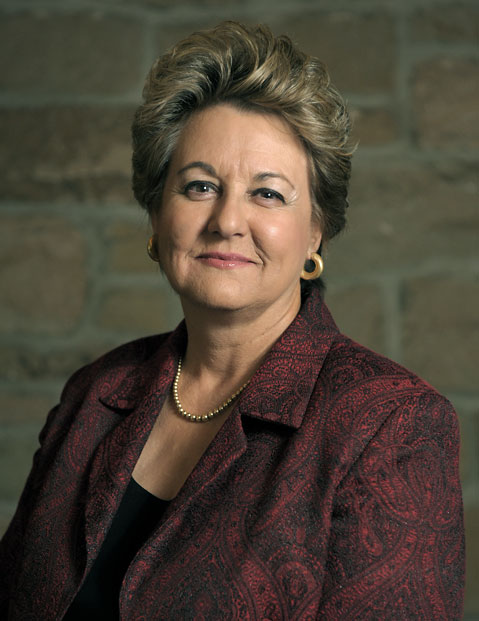Endorsements: June 2012
Vote for Capps for Congress; Jackson for State Senate; Williams for Assembly; Carbajal, Farr, and Howerton for Supervisor; Yes on Props 28 (Term Limits) and 29 (Cigarette Tax); Yes on Measures W and X
Lois Capps for Congress
In the eight times Lois Capps has run for a seat in the House of Representatives, this paper has always endorsed her. We have never regretted it. For the 12 years she has been in Congress, Capps has continually proved that public service and effective politics need not be mutually exclusive in Washington, D.C.
For one thing, Lois Capps works exceedingly hard, returning to her district every single weekend. And she gets things done. Just ask the 10,000 Santa Maria residents who won’t have to pay higher flood insurance because Capps secured around $50 million in federal money for much-needed improvements to the Santa Maria River levee. Or ask the scholars at UCSB’s Palm Center about the quiet but essential role she played in getting the Pentagon’s odious Don’t Ask, Don’t Tell policy repealed. Working with other representatives, Capps played a major role in returning the Forest Service’s air tanker base to Santa Maria on a full-time basis so that there can be rapid response when fires break out — something our district desperately needs.

Of course, we’ll never forget how Lois Capps was one of the few representatives to vote against giving President George W. Bush unlimited powers to wage war in the wake of 9/11. Had we had more elected officials in Congress like her, perhaps the unnecessary war in Iraq could have been avoided. On environmental issues, Capps has fought to require big utility companies to curb mercury emissions and has been a consistent voice against Big Oil. She’s relentlessly bird-dogged PG&E and SoCal Edison to make sure the utility giants conducted the seismic surveys necessary to ensure their respective Diablo and San Onofre plants can withstand the likely maximum earthquake. She’s pushed hard for legislation to reduce interest rates for college loans and to eliminate the $60 billion in subsidies to financial institutions that sell such loans. And she voted for President Barack Obama’s health-care reform bill, but only after fighting and winning full access to reproductive choice, something that is constantly under attack by the current House majority.
Given the meltdown that’s seized the nation’s capital since Tea Party Republicans gained control of the House two years ago, it’s especially urgent that Capps be reelected. Congressional Republicans have adopted a kamikaze approach to governing; just last week, the Republican majority passed a budget that would inflict massive cuts on food stamps, day care, and senior programs serving 23 million individuals while leaving Pentagon spending utterly untouched. Twice in the past year, the federal government was taken to the brink of total shutdown as Republican budget hawks played chicken with continuing budget resolutions. After 10 years of requiring our military to fight two wars without requiring new taxes to pay for it, Republicans are at last waking up to the astronomical costs. Their solution to balancing the budget? Gut all nonmilitary programs and give tax breaks to the rich. On the domestic front, the new Republicans have gotten in touch with their “Mad Men” selves. Not only are gay rights under attack but so, too, is basic access to birth control. Into this madness, we ask you to reelect Lois Capps.
Capps came to political office after her husband, Walter Capps, died in 1997 during the middle of his first Congressional term. Since then, Lois Capps, who had previously worked as a nurse in Santa Barbara public schools, has been nominated by her peers as the “nicest” member of Congress more than once. Her staff actually likes her, which makes her an oddity among elected officials. Foes — and some friends — have mistaken her innate decency for weakness and always paid the price.
Political handicappers suggest this year’s race will be Capps’s toughest yet. The district boundaries were drastically redrawn, and the overwhelming edge enjoyed by registered Democrats in previous elections has been reduced, bringing Republicans within striking distance. But for the time being, the Republicans running against Capps — former actor and Tea Party activist Chris Mitchum and former Lt. Gov. Abel Maldonado — appear either hapless or inept. But given the stakes faced by this nation, none of us can afford to be complacent. Please make sure to vote for Lois Capps.

Hannah-Beth Jackson for 19th State Senate District
Given the magnitude of the problems confronting anyone serving in state government and the destructive term time limits they face, Hannah-Beth Jackson is the clear and compelling choice for this State Senate seat. Since this is an open primary with three candidates running in the race, it is most likely that the Republican, Mike Stoker, and one of the two Democrats will be in a runoff this November. Jackson is a liberal Democrat with a well-documented passion for environmental and education issues. And she’s already served two terms in Sacramento in the State Assembly. That means she knows how the system works and how — too frequently — it doesn’t. By dint of her lifelong involvement in political affairs, Jackson already knows most of the key players on a first-name basis. Her chief Democratic rival, Jason Hodge, is an experienced firefighter who has served ably and creatively on the Oxnard Harbor Commission. But even though his wife, Fiona Ma, is second-in-command at the State Assembly and he has lobbied for his union in the capital, that doesn’t begin to compete with Jackson’s actual boots-on-the-ground experience. Jackson has had a reputation for being a political maverick and not rubber-stamping whatever party leadership dictates. We say: Good. Keep it up. Jackson achieved a lot while last in office, and often by working both sides of the aisle. How many elected officials anywhere can boast to have forged a legislative alliance between environmental activists and the California Farm Bureau? Jackson can: She got both sides to sign off on a bill limiting the use of pesticides near schools, day-care centers, and nursing homes. Jackson operates from a position of optimism. She truly believes in the California Dream and the American promise. If she hasn’t given up on either one, then neither should we. Vote for Hannah-Beth Jackson.

Das Williams for 37th Assembly District
Das Williams is a young, serious politician who has done a good job in Sacramento. If there is any hope to fix California, it must be done with representatives who have some experience. Das Williams has that and more. He is pro-education and pro-environment. He knows his district, is accessible to his constituents, and combines political smarts, imagination, and ambitions. Can you ask for anything more? Certainly not by voting for his opponent, Rob Walter, a politically inexperienced attorney from Santa Ynez. Vote for Das William. He will make a positive contribution to his district and the state.

Salud Carbajal for 1st District Supervisor
Salud Carbajal works very hard for his district, which encompasses the secure, wealthy residents of Montecito and the poor, vulnerable people on the Eastside. It is not easy to represent two such diverse constituents, but Carbajal has done so by maintaining a clear head and an honest heart. He is a radical moderate, a practical idealist, and, most importantly, a pragmatist. Though his politics consistently tilt to the left of the Board of Supervisors, he does so very, very carefully. He is a shrewd and astute politician who also acts in an open, friendly manner to all who approach him. It’s not just the $304,100 that he keeps parked in his campaign war chest that has chased away all challengers, serious or otherwise. But it’s helped. Little wonder he’s emerged as the reigning 900-pound gorilla of Santa Barbara politics. And little wonder as well that his only opponent — Carole Lieff — left town shortly after announcing her candidacy. Vote for Salud Carbajal. He has done a good job.
3rd District: Doreen Farr
This one’s easy. It’s also crucial. Vote for Doreen Farr.
Third District voters face a stark choice between the first-term incumbent Farr — as hard-working and balanced a supervisor as the county has seen in years — and Steve Pappas — a political do-nothing whose agenda for the future is as threadbare as his record of accomplishment. This may sound harsh, but over the past four years, Farr has effectively amassed an impressive record of achievement. She has worked hard to preserve the fragile majesty of the Gaviota Coast. She worked to get the road to Rancho Guadalupe Dunes County Park reopened only two months into representing Guadalupe after redistricting, after 4th District Supervisor Joni Gray had let the project stall for the better part of a year. She has initiated new protections for county groundwater supplies against potential pollutants introduced by the oil and gas industry as it fracks for subsurface mineral wealth. She has fought to impose fiscal sanity on the county’s dysfunctional mental-health bureaucracy, while protecting the mentally ill, perhaps the most vulnerable population in the county. All this, she effectively pursued during the county’s worst budget crisis since the Great Depression.

Pappas, by contrast, has spent the past four years in court, charging that widespread voter fraud occurred during Farr’s 2008 election victory — serious charges that had to be taken seriously. But those charges were completely dismissed during a hearing before the late Judge William McLafferty, who was totally unimpressed with Pappas’s case. To date, Pappas has not presented any evidence that could possible be construed as voter fraud. But Pappas not only appealed, he is constantly promising to bring forth evidence that he never does. All his claims have been legally and continually dismissed. As a result, Farr has been forced to defend herself, a dismaying distraction that she has remarkably not allowed to interfere with her duties as supervisor. However, even though Farr was awarded $525,000 in attorney fees, she has yet to see a dime of that money. (Editor’s not: While a judge originally awarded Farr legal fees to the tune of $706,914, the official number was calculated to be more in the neighborhood of $525,000. All numbers now reflect that change.)
How has Pappas been able to fund such weak, baseless claims? One wealthy Santa Ynez woman, Nancy Crawford-Hall, has bankrolled both his original campaign and his voter-fraud allegations. Mrs. Crawford-Hall, who owns a large ranch and a newspaper, is certainly entitled to her opinions, which she expresses quite forcefully in her editorials, but it is hard to regard the Pappas campaign as anything more than a figment of her political imagination. Voters should be aware that though Pappas claims to espouse moderate politics, Mrs. Crawford-Hall is a well-known right-wing, Tea Party, anti-government extremist. Yet she has given Pappas more than $400,000 over the last five years.
It should be noted that Farr has taken considerable heat from her opponent for donations she’s received over the years from public-employee unions. But Farr voted with a board majority to impose a contract against a union’s wishes. Since then, Farr has not received any money from that union. Whatever the merits of her decision, it demonstrated a genuine independence of spirit.
The 3rd District — which includes parts of Goleta, all of Isla Vista, all of the Santa Ynez Valley, and parts of Lompoc — has more miles of coastline than any other district. It boasts the Gaviota Coast, where the ocean currents of the northern Pacific collide with those of the south to create a uniquely rich ecosystem found nowhere else on the planet. And politically, it combines the idealistic left-leaning yearnings of UCSB’s student body with the more conservative beliefs held by the farmers and ranchers in the rural north of the district. Add in the Chumash Casino, whose desire for growth and change have brought controversy to the Santa Ynez Valley, and you have one very combustible district.
Beyond that, the 3rd District is key to the political direction of the board majority. As the 3rd District goes, so goes the county. As a politician, Farr has taken flak for her exceedingly low-key demeanor. In the karaoke of sound-byte politics, she can barely hum a tune. But this glaring “defect” has allowed Farr to navigate the county’s treacherous political waters. It’s helped her get things done.
Pappas, by contrast, has been conspicuous mostly by his absence. We know he doesn’t like the Chumash Casino; we know he complains about voter fraud. But what we don’t know about his views other than that is a lot. Now in his third bid for office, Pappas has never been seen at county supervisors’ meetings. As he explained, he watches the meetings on TV. Given the stakes involved for the 3rd District and the county as a whole, that’s as close to the supervisors’ dais as Pappas should ever be allowed to get.
The stakes could not be higher. We urge that you vote for Doreen Farr.
Joyce Howerton for 4th District Supervisor
Few politicians anywhere in Santa Barbara County can touch Joyce Howerton, now challenging 4th District incumbent Joni Gray, for sheer breadth of experience and engagement. She has lived in Lompoc for more than 30 years, has raised a family with her husband, Al, and has been elected to the City Council and served as mayor. She is also a longtime environmental and social-justice activist, working to preserve agricultural land, to keep farm workers safe, to encourage and educate the young, and, most recently, to save hundreds of affordable housing units in Lompoc — certainly one of the neediest communities in the county. Which brings us to her opponent Joni Gray, who has behaved as though her district was a sort of fiefdom. The Lompoc Housing and Community Development Corporation, whose legal counsel was her own husband and whose chairperson worked in Gray’s office, was managed with pathological incompetence. We are deeply troubled by the close familiar, personal, and political relationships between that management and incumbent Supervisor Joni Gray, who never saw fit to declare a conflict of interest when those issues came before the supervisors until ordered to do so. While Gray preaches the conservative creed of fiscal caution and moral high ground, her irresponsible behavior will wind up costing county taxpayers millions of dollars. It’s time for a change; we recommend Joyce Howerton.
Yes on Prop. 28: Tweaks State’s Term Limits Requirements
Term limits should be abolished outright, not reformed. But since cookies aren’t on the menu, we’ll take the crumbs. If approved, Proposition 28 will modify the term limits formula adopted by state voters during a throw-the-bums-out political tantrum back in 1990. Under existing law, members of the Assembly can serve a maximum of only six years, and state senators only eight years, with a total of 14. Under what’s proposed by Prop. 28, the maximum number of years will be reduced to 12 years. In what could be a significant improvement, Prop. 28 will allow elected officials the choice of serving all those years in one place. This should reduce some of the political attention deficit disorder afflicting elected officials, who typically think too much about how they might ascend the political food chain. Term limits promised state voters the elimination of “career politicians” but delivered fool’s gold. We’ve always been convinced that the State of California — the ninth largest economy in the world — is way too important to be left to amateurs. Term limits have helped make what was already a challenging job impossible. It effectively stripped elected officials of the experience, seasoning, and institutional memory required to do their jobs well. And by so doing, it gave an even bigger edge to the lobbyists and special interests for whom Sacramento politics has always been a very big business. What’s wrong with Sacramento transcends term limits, but they are very much part of the solution. Critics have rightfully objected that some of Prop. 28’s major backers are would-be developers of professional football stadiums whose generosity happened to coincide with special legislation granting them and their projects immunity from environmental review. Pay-to-play politics clearly is a very big part of what ails Sacramento. That being acknowledged, we believe Prop. 28 offers voters at least the possibility of more experienced representation from their elected officials. Based on that, we urge you to vote yes on Prop. 28.
Yes on Prop. 29: Increase Cigarette Tax by $1 a Pack
There may, in fact, be a lot of problems with the fine print of Proposition 29, but anything that discourages people from smoking by increasing the cost of cigarettes is a positive step. If approved, Prop. 29 would increase the cost of cigarettes and tobacco products by $1 a pack, thus generating about $800 million a year in revenues. If smokers don’t respond to what they feel in their throats and their lungs, maybe they will feel the pain when it hits them in the wallet. The funds generated by Prop. 29 reportedly will be spent primarily on various forms of cancer research and will be administered by a nine-member oversight committee of academics and research big shots. Critics of Prop. 29 — Big Tobacco has spent $38 million to date to explain the many flaws hidden in its fine print — are quick to point out that the guidelines for directing these funds are squishy in the extreme. Given the problems past initiatives have had harnessing the funds collected to the research promised, we’re perfectly willing to believe the worst. But in a way, so what? Every year, 226,000 new cases of lung cancer are diagnosed. Every year, 160,000 die from lung cancer. Not all of that can be blamed on smoking. Just most of it. And tobacco is responsible for 443,000 early deaths a year. If foreign terrorists inflicted such devastation, we’d have declared war many times over. Lung cancer remains the deadliest form of cancer, but it’s also the most preventable. We don’t pretend Prop. 29 approximates good government. It is, however, good preventative medicine.
Yes on Measures W and X School Parcel Tax Measures
Over the past five years, the Santa Barbara Unified School District has had to inflict $20.5 million in cuts because of the dysfunction in Sacramento. Santa Barbara voters, hoping to inoculate their kids and grandkids from educational deprivation, voted overwhelmingly to increase their own property taxes four years ago. The $6.5 million raised by what was known as Measures H and I has provided a limited but desperately needed degree of financial stability to a school system that would have found itself in deep trouble without it: Math, science, technology, music, and art options available in what should be one of the best endowed school districts on the planet would have been criminally curtailed. Those parcel tax measures will expire next June. Coming to the rescue on this June’s ballot are Measures W and X, which would continue to help finance the schools for the next four years.
One would increase the parcel tax for property owners living within the elementary school district by $54; the other would increase the parcel tax on properties within the secondary district by the same amount. For properties lying within both districts, the increase would be $108 a year. Seniors, for whom this might impose a financial burden, would be allowed to opt out. That may sound like a lot. But in reality, it translates to 28 cents a day. Should these measure not pass, the equivalent of 14 full-time teachers will lose their jobs. If past voting behavior offers a reliable guide, these two measures should pass handily. But a two-thirds majority is required to renew these parcel taxes. Given the world of new budget pain that’s engulfing Sacramento, where the projected budget shortfall recently shot from $9 billion to $16 billion, it’s only a matter of time before the bad news travels south to Santa Barbara. We can do very little to fix what ails Sacramento, where there’s talk of shortening the school year further and cutting education funding to the tune of $316 per student. But by voting for Measures W and X, you can strike a blow for local control, and for our children. As they say, taxes raised in Santa Barbara stay in Santa Barbara.
No on Measure Y
Like many in the community, we find ourselves conflicted about Measure Y. Good, sincere people have advocated for both sides of the issue. If approved, Measure Y would grant a public easement to a private developer, Mark Lee, so he could build an entrance bridge across Arroyo Burro Creek into a 25-unit housing development known as Veronica Meadows, which he intends to build on 50 acres located across Las Positas Road from Elings Park. In exchange for City Hall’s approval, Lee has pledged to restore 1,800 linear feet of Arroyo Burro Creek, to remove all nonnative plants from a narrow six-acre strip of city-owned land on the eastern boundary of the creek and revegetate it with native species, and to build a pedestrian path — and also allow bicyclists to ride — through his property on their way from Elings Park to Hendry’s Beach.
We have a direct say in the matter only because the City Charter requires voter approval in instances where public easements are granted for private development. In this case, Lee needs a public easement over an admittedly tiny chunk of unimproved, undeveloped public parkland on which to locate a bridge abutment. It’s not a simple project, having taken more than 10 years to make its way through the city’s exhaustive and exhausting environmental review process.
While we are genuinely impressed by the developer’s offer to restore so much of the creek, we are not certain Arroyo Burro actually needs this kind of medicine. The creek, one of Santa Barbara’s hidden aquatic treasures, runs all year long, in many places more than knee-deep. While other city creeks desperately need help, Arroyo Burro has weathered the slings and arrows of benign neglect relatively well. The urgency for so ambitious a restoration project is not sufficient, in our estimation, to justify so large a project. And beyond the conceptual outline thus far approved, we’re not sure what the final creek plan looks like. No one does. Or how much it would cost. And whether we can rely upon future homeowners to honor the financial obligation — potentially quite substantial — to which they’ve been committed of future creek upkeep and maintenance. It’s worth noting that the bridge — more precisely the abutment — was identified in the environmental impact report as a Class I negative unavoidable impact that could not be mitigated. Wildlife traveling down the banks — unusually steep — might find their path pinched by concrete support block underneath the bridge, and stray onto the path of Highway 225, thus increasing their risk of becoming roadkill.
Champions of the project are quick to herald the bicycle and pedestrian access it will provide. They argue this pathway will establish a child-friendly link between Arroyo Burro beach and Elings Park, and perhaps even between the beach and the Westside itself. If only. The hill leading from Las Positas Road to Elings Park is sufficiently steep to be daunting for even the most experienced road warrior. In addition, we remain concerned that the high speed of traffic along Las Positas Road — 55 miles an hour — poses serious public safety concerns. While the developer has fully committed to paying for a new traffic light by the proposed bridge entrance, there’s no guarantee such a traffic light can or will ever be approved. City traffic engineers point out such a light must meet a host of state and federally recognized requirements — “warrants” — before it could be installed. Thus far, no such warrants have been established. Maybe they will. And maybe they won’t. But at that intersection and on that bend of that road — where speeds are high and visibility challenged — “maybe” isn’t nearly good enough. For us, anything less than “definitely” is a deal killer.
Just as troubling is the actual size of the development: 25 units located in an environmentally constrained site riddled with dormant landslides and geologically volatile terrain. Also, the project is at odds with the city’s new general plan, which seeks to concentrate larger developments along urban transit lines, not along urban creek ways — a principle with which we are in total agreement. Although the Santa Barbara City Council has twice approved Veronica Meadows, the project’s history in the review process is far more conflicted. Initially, city planners were inclined to reject the project out of hand. The Planning Commission was deadlocked 3-to-3, and technically, that constitutes a rejection. Likewise, the city’s Creeks Advisory Committee and Parks Commission opposed the plan. Despite Mark Lee’s sincere and good efforts to work within the city’s requirements, we must urge a No vote on Measure Y. It is not in the best interests of the City of Santa Barbara.



